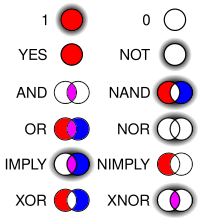Logic in computer science

Imagine you are playing with blocks. You have different shapes and colors of blocks, and you want to put them together to make different structures. Logic in computer science is kind of like playing with these blocks, but instead of blocks, we use something called "logical expressions" to make decisions.
Logical expressions are like special sentences that use words like "AND," "OR," and "NOT" to tell the computer what to do. Just like when you're playing with blocks, you can combine different logical expressions to make different decisions.
For example, let's say you have a set of blocks that are either red or yellow. You want to tell the computer to only do something if a block is yellow. To do this, you could use a logical expression like "IF the block is yellow THEN do something." The computer will only do that something if the block is actually yellow.
You can also use logical expressions to make more complex decisions. For example, you might want the computer to do something only if BOTH of two conditions are met. You could use a logical expression like "IF the block is yellow AND the block is also rectangular THEN do something."
Overall, logic in computer science is all about making decisions using logical expressions. Just like with blocks, you can combine different expressions to make more complex decisions, and the computer will always follow the rules you give it.
Logical expressions are like special sentences that use words like "AND," "OR," and "NOT" to tell the computer what to do. Just like when you're playing with blocks, you can combine different logical expressions to make different decisions.
For example, let's say you have a set of blocks that are either red or yellow. You want to tell the computer to only do something if a block is yellow. To do this, you could use a logical expression like "IF the block is yellow THEN do something." The computer will only do that something if the block is actually yellow.
You can also use logical expressions to make more complex decisions. For example, you might want the computer to do something only if BOTH of two conditions are met. You could use a logical expression like "IF the block is yellow AND the block is also rectangular THEN do something."
Overall, logic in computer science is all about making decisions using logical expressions. Just like with blocks, you can combine different expressions to make more complex decisions, and the computer will always follow the rules you give it.
Related topics others have asked about:
